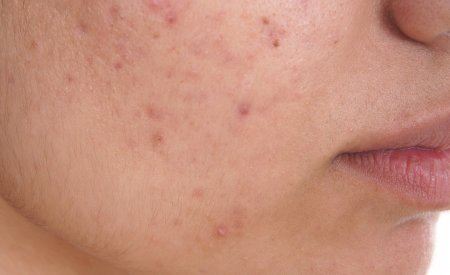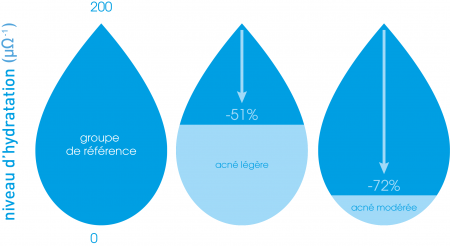Is acne necessarily related to oily skin?
Oily skin and acne always seem to be related: there can be no pimples without excess sebum. But contrary to popular belief, acne-prone skin is also easily weakened.

Oily skin and acne always seem to be related: there can be no pimples without excess sebum. But contrary to popular belief, acne-prone skin is also easily weakened.
The reason for this is simple: acne-prone skin is naturally dehydrated. This biological reality is too often forgotten in the fight against blemishes.
The dysseborrhoea characteristic of acne often weakens the skin barrier and the skin become dehydrated, particularly in severe acne. In this case, there is a double penalty of sensitivity + pimples with a very particular profile. This biological process by which acne-prone skin is weakened is exacerbated by certain types of acne treatments.
Those affected know all too well that it is sometimes difficult to choose between the desire to eliminate blemishes with an effective treatment and the need to preserve acne-prone skin that will not tolerate it: this skin has often been weakened and is prone to redness and irritation. This distinctive skin profile is not sufficiently taken into account, and it is common for affected patients to simply abandon their acne treatment due to a lack of suitable skin care products.
Skin sensitivity is the main reason for abandoning medical acne treatments, whether for oral or topical use, in 50% of cases*. The use of cosmetic care products promotes compliance with medical treatment.*
We know that dysseborrhoea plays a major role in the formation of blemishes. However, it is also responsible for the dehydration of acne-prone skin.
Indeed, oxidation of the skin’s lipids modifies its structure and leaves it more permeable. The altered sebum composition of acne patients causes transepidermal water loss (TEWL) to increase, which is why acne-prone skin can be naturally dehydrated.
The skin becomes sensitive and has a hard time tolerating topical and systemic acne treatments. Typical signs of dry and sensitive skin then appear, including redness, irritation, scales and itching.
